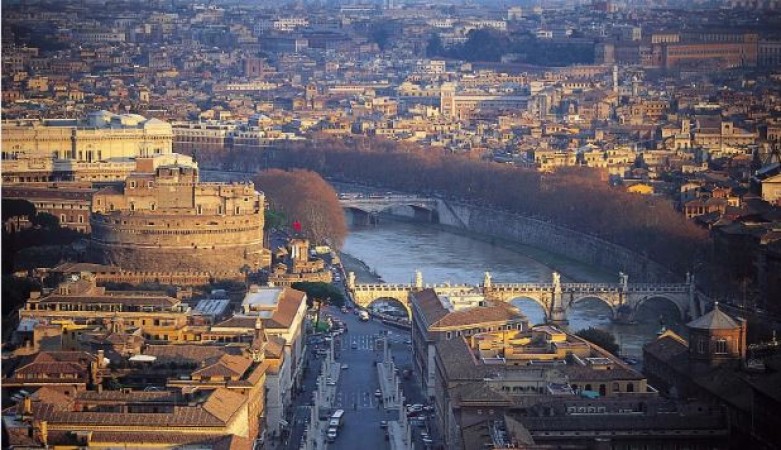
Rome, the eternal city, stands as a testament to the intertwining of ancient history and modern life. With a history spanning over 2,700 years, Rome has witnessed the rise and fall of empires, revolutions, and significant cultural contributions. This article delves into the allure of Rome, exploring its iconic landmarks, cultural heritage, and enduring impact on the world. Rome's story begins in 753 BC, according to legend, when the twin brothers Romulus and Remus founded the city on the banks of the Tiber River. Rome soon evolved into a powerful kingdom and, later, a republic that expanded its reach throughout the Mediterranean. Ancient Rome's political, military, and architectural achievements continue to captivate historians and tourists alike.
Rome, often referred to as the "Eternal City," is the capital and largest city of Italy. With a history that spans over two millennia, Rome stands as a living testament to the evolution of Western civilization. It has played a pivotal role in shaping world history, culture, and politics. Rome was founded in 753 BC, according to legend, and gradually grew into a powerful city-state. It was the seat of the Roman Kingdom, which later transitioned into the Roman Republic and, ultimately, the Roman Empire. During its heyday, the Roman Empire was one of the most extensive and influential empires in history, encompassing vast territories across Europe, Africa, and the Middle East.
Ancient Origins: Rome's story begins in 753 BC, according to legend, when the twin brothers Romulus and Remus founded the city on the banks of the Tiber River. Rome soon evolved into a powerful kingdom and, later, a republic that expanded its reach throughout the Mediterranean. Ancient Rome's political, military, and architectural achievements continue to captivate historians and tourists alike.
ALSO READ :Summer in the Swiss Riviera: Discovering the Beauty of Lake Geneva and Montreux
The Colosseum: One of Rome's most iconic landmarks is the Colosseum, also known as the Flavian Amphitheatre. Built in AD 70-80, this colossal structure once hosted gladiatorial contests and other public spectacles. Today, the Colosseum stands as a symbol of ancient engineering marvels and attracts millions of visitors each year.
The Pantheon: The Pantheon, built around 126 AD, remains an architectural masterpiece. This Roman temple, dedicated to the gods of antiquity, boasts a magnificent dome and an oculus, allowing a captivating interplay of light and shadow. The Pantheon's survival through the centuries showcases Roman ingenuity and engineering prowess.
The Vatican City: Situated within Rome, the Vatican City serves as the spiritual and administrative center of the Roman Catholic Church. It houses St. Peter's Basilica, a renowned Renaissance marvel, and the Sistine Chapel, adorned with Michelangelo's awe-inspiring frescoes. The Vatican's religious and artistic significance draws pilgrims and art enthusiasts from all corners of the world.
The Roman Forum: The Roman Forum was the heart of ancient Rome, where citizens gathered for social, political, and commercial activities. Surrounded by impressive ruins, such as the Arch of Titus and the Temple of Saturn, the Forum offers a glimpse into the grandeur of Rome's past. With its rich history and densely packed urban landscape, preserving Rome's cultural heritage while meeting the needs of a modern city is a delicate balancing act. The preservation of ancient monuments, dealing with traffic congestion, and managing the influx of tourists are ongoing challenges faced by Rome.
ALSO READ :Palma de Mallorca: The Enchanting Capital of Spain's Balearic Islands
conclusion : Rome remains an enchanting city, where the echoes of the past resonate through its ancient ruins and the soul of the present thrives in its vibrant streets. As a symbol of Western civilization's cradle, Rome stands as an enduring beacon of history, culture, and human achievement. Preserving Rome's historic treasures is a continuous endeavor. Urban development, pollution, and the pressures of tourism pose challenges to the city's cultural heritage. Organizations like UNESCO work alongside local authorities to safeguard Rome's invaluable heritage for future generations.
Rome's 2,700-year-old journey weaves together ancient marvels and contemporary charm. The Colosseum, the Pantheon, the Vatican, and the Roman Forum stand as vivid testaments to the city's enduring legacy. As a cradle of Western civilization and a hub of artistic inspiration, Rome continues to cast its spell on the world. By honoring its past while embracing the present, Rome truly embodies its nickname as the eternal city.
The Serenity of Seychelles: Secluded Beaches and Island Adventures
Exploring the Croatian Coastline: Sailing the Adriatic and Visiting Dubrovnik
Adventure in New Zealand's South Island: Queenstown, Milford Sound, and Glacier Country
Saarland: A Hidden Gem of Germany